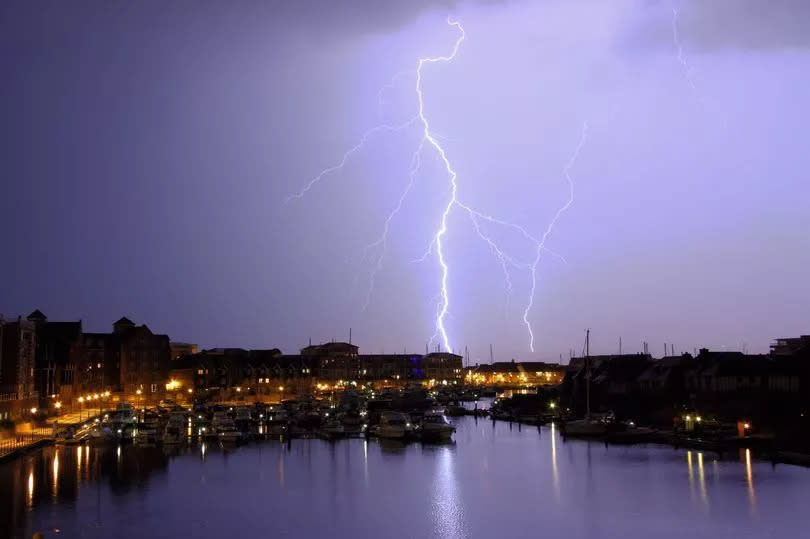Why thunderstorms happen after hot weather as Met Office explains scientific reason

A weather expert has explained why thunderstorms tend to come after periods of hot weather as the UK saw thunder and lightning hit over the weekend.
So why do we frequently get thunderstorms after periods of hot weather in the UK? Heatwaves and consistently hot weather often end with a thunderstorm, with beautiful sunshine swiftly followed by heavy rain, thunder and lightning.
As the Met Office explains, the key ingredients for a thunderstorm are atmospheric instability and humidity, reports Hull Live. Thunderstorms usually occur when there is increased moisture in the system and they typically develop in the afternoon after continuous hot weather from earlier in the day.
Thunderstorms are formed by the intense heating of the earth's surface and are most prevalent in regions where the climate is both hot and humid. The Met Office says thunderstorms develop when the atmosphere's structure becomes unstable, which happens when warmer air exists underneath significantly colder air.
Thunderstorms are a regular feature on our planet. The Met Office reports that lightning strikes the Earth's surface about 44 times every second, adding up to nearly 1.4 billion strikes annually.

The sound of thunder is caused by the air heating up rapidly due to a lightning strike, while lightning itself is a massive electrical discharge occurring between clouds, from cloud to air, or from cloud to ground, as explained by the Met Office.
Graeme Madge from the Met Office described thunderstorms as "one of the most dramatic and most intense" weather events in the UK, capable of releasing vast amounts of moisture suddenly and "incredibly intensively".
He warned that when a large amount of water hits hard, dry ground, especially after a prolonged dry period, the risk of flooding increases. According to the forecaster, flash floods can occur when drainage systems are unable to cope with the high volume of rain falling in a short time.
While the East Midlands and the South East are the hotspots for thunderstorms in the UK, per the Met Office, hosepipe bans won't be alleviated by sudden heavy rains. The country actually requires several days of steady, light rain to effectively penetrate the soil, rather than quick downpours that tend to run off without much benefit.
Join the Daily Record's WhatsApp community here and get the latest news sent straight to your messages.

 Yahoo News
Yahoo News 
